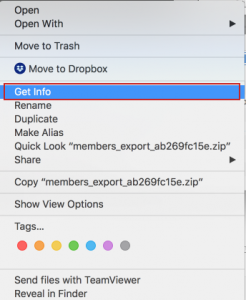

- #Mac set default application for excel files how to
- #Mac set default application for excel files full
- #Mac set default application for excel files free
The sample file path above is relatively simple. This workbook is saved in the D drive.Īs mentioned above, notice that when specifying the filename, you must provide the whole file path, name and extension. The following macro (named Open_Workbook_Basic), opens the Excel workbook whose name is “Example – VBA open workbook”. Let's take a look at the Workbooks.Open method in practice: However, you can also use the second syntax (simply “File_Name”. For the reasons that I explain here, this is my preferred syntax. The first sample statement above uses named arguments (Filename:=”File_Name”).
#Mac set default application for excel files full
As shown in the example below, when specifying the workbook's file name, you must provide the full path and name of the file.

Where “File_Name” is the file name of the workbook that you want to open with VBA. More specifically, the basic VBA statement syntax to open a particular workbook is: You specify which workbook you want to open by using the Filename argument. Since taking a look at 15 arguments at once can get a little overwhelming, let's start by taking a look at the most basic case: opening an Excel workbook whose name you know. Each of these 15 optional arguments allows you determine a different aspect of how the Open method opens an Excel workbook. The Workbooks.Open method has 15 optional arguments.

Within Visual Basic for Applications, the method that opens an Excel workbook is the Workbooks.Open method.
#Mac set default application for excel files how to
#Mac set default application for excel files free
You can get immediate free access to this example workbook by clicking the button below.īoth of these macros rely on 1 or both of the following methods: This Excel VBA Open Workbook Tutorial is accompanied by an Excel workbook containing the data and basic structure macros I use below. I cover this topic by explaining 2 of the most basic macros you can use to open an Excel workbook. This Excel tutorial focuses on this basic and common Excel operation: If you're working with VBA, it's only a matter of time before you need to start creating macros to open Excel workbooks.

You've probably opened a countless amount of Excel workbooks yourself. Regardless of their level (beginner or advanced), virtually every single Excel user has to constantly open workbooks. See screenshot above:įrom now on, all files of the specified file will be opened with the new program by default, including this type of Outlook attachments.One of the most basic and common operations in Excel is opening a workbook. And finally close the Set Association dialog box. Now in the popping up dialog box, please click to select the new program you will open the specified type of files with, and click the OK button. csv in my example), and then click the Change program button. In the Set Associations dialog box, please click to select the extension of the specified file type (. Now you get into the Default Programs dialog box, please click the Associate a file type or protocol with a program option. Please open the Default Programs in Control Panel with opening a folder and pasting below path into the address box:Ĭontrol Panel\All Control Panel Items\Default ProgramsĢ. You can also associate the specified file type of Outlook attachments to a program in Control Panel to change the default programs of opening specific kind of Outlook attachments.ġ.


 0 kommentar(er)
0 kommentar(er)
